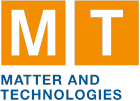Speaker
Dr
Alexander Debus
(Helmholtz-Zentrum Dresden - Rossendorf)
Description
We present Traveling-Wave Electron Acceleration (TWEAC), a novel compact electron accelerator scheme based on laser-plasma acceleration. While laser-plasma accelerators provide multi-GeV electron beams today, the acceleration to higher energies is limited. The sub-luminal group-velocity of plasma waves let electrons outrun the accelerating field.
In order to control the speed of the accelerating plasma cavity, TWEAC utilizes two pulse-front tilted laser pulses whose propagation directions enclose an acute angle. The accelerating cavity is created along their overlap region in the plasma and can move at the vacuum speed of light. The oblique laser geometry enables to constantly cycle different laser beam sections through the interaction region, hence providing quasi-stationary conditions of the wakefield driver. Thus, TWEAC offers constant acceleration without a dephasing electron beam while avoiding usual laser pump depletion within the interaction region. This opens the way for electron energies beyond 10 GeV, possibly towards TeV class electron beams, without the need for multiple laser-accelerator stages.
In this poster we study the energy efficiency of TWEAC compared to LWFA. We find that for low-angle TWEAC setups, it is possible to accelerate high-charge bunches with laser to electron beam energy efficiencies close to 50%, which exceeds energy efficiencies typically attained with LWFA.
Author
Dr
Alexander Debus
(Helmholtz-Zentrum Dresden - Rossendorf)
Co-authors
Mr
Axel Huebl
(Helmholtz-Zentrum Dresden - Rossendorf)
Dr
Klaus Steiniger
(Helmholtz-Zentrum Dresden - Rossendorf)
Dr
Michael Bussmann
(Helmholtz-Zentrum Dresden - Rossendorf)
Mr
René Widera
(Helmholtz-Zentrum Dresden - Rossendorf)
Mr
Richard Pausch
(Helmholtz-Zentrum Dresden - Rossendorf)
Prof.
Thomas Cowan
(Helmholtz-Zentrum Dresden - Rossendorf)
Prof.
Ulrich Schramm
(Helmholtz-Zentrum Dresden - Rossendorf)

